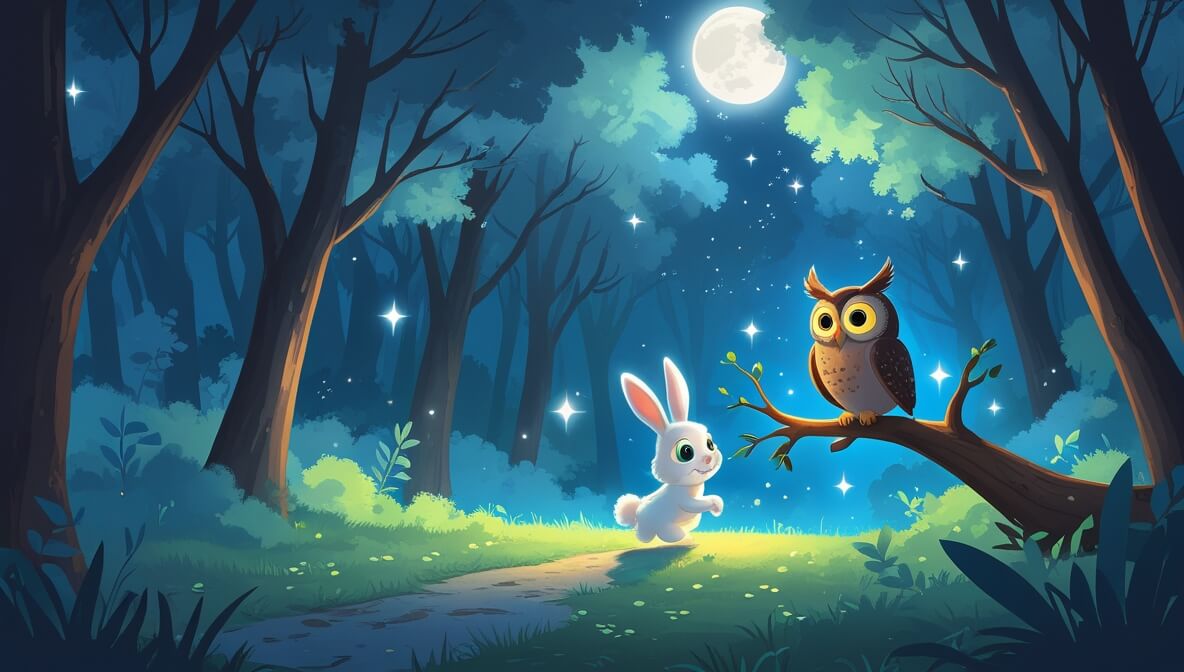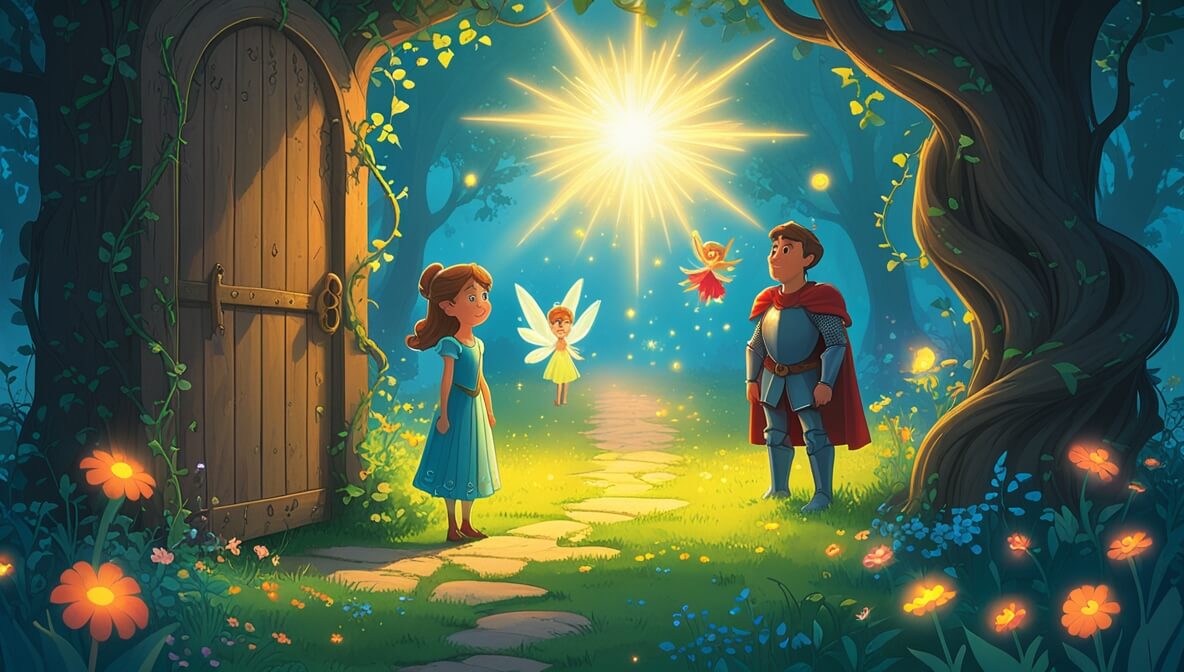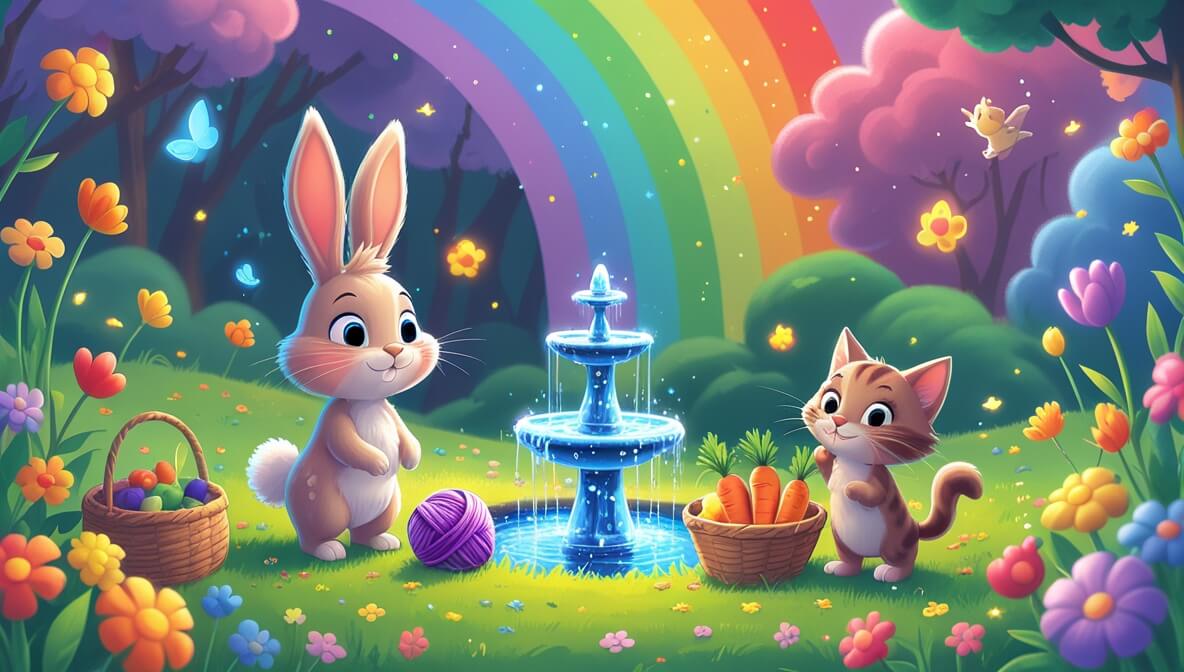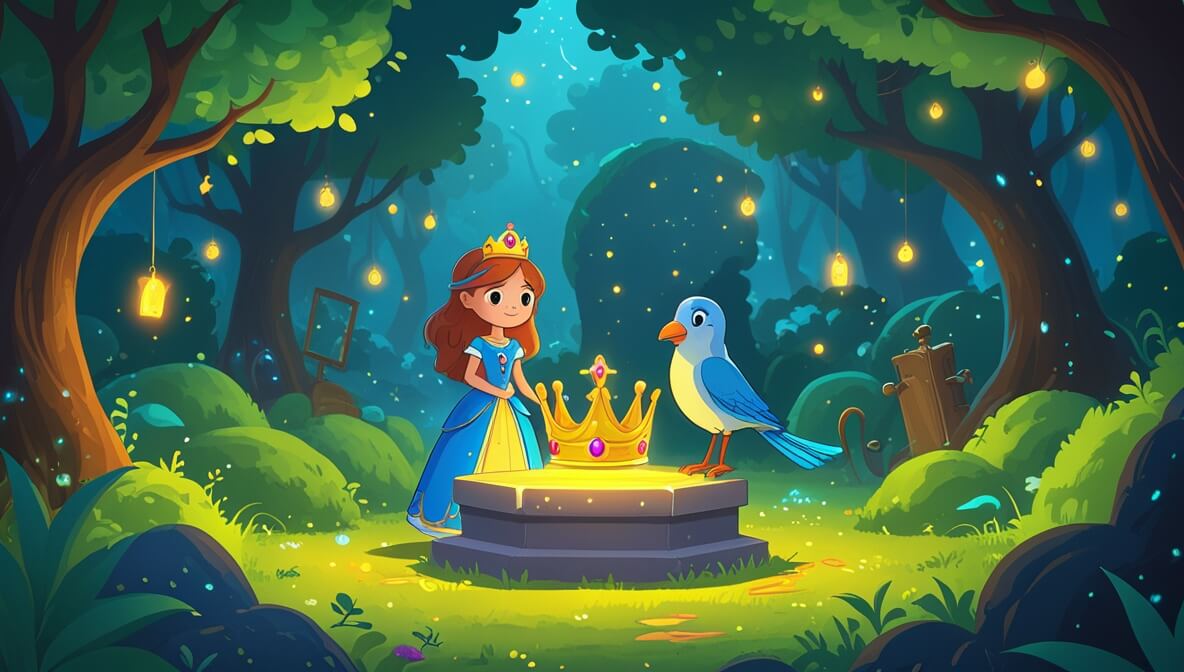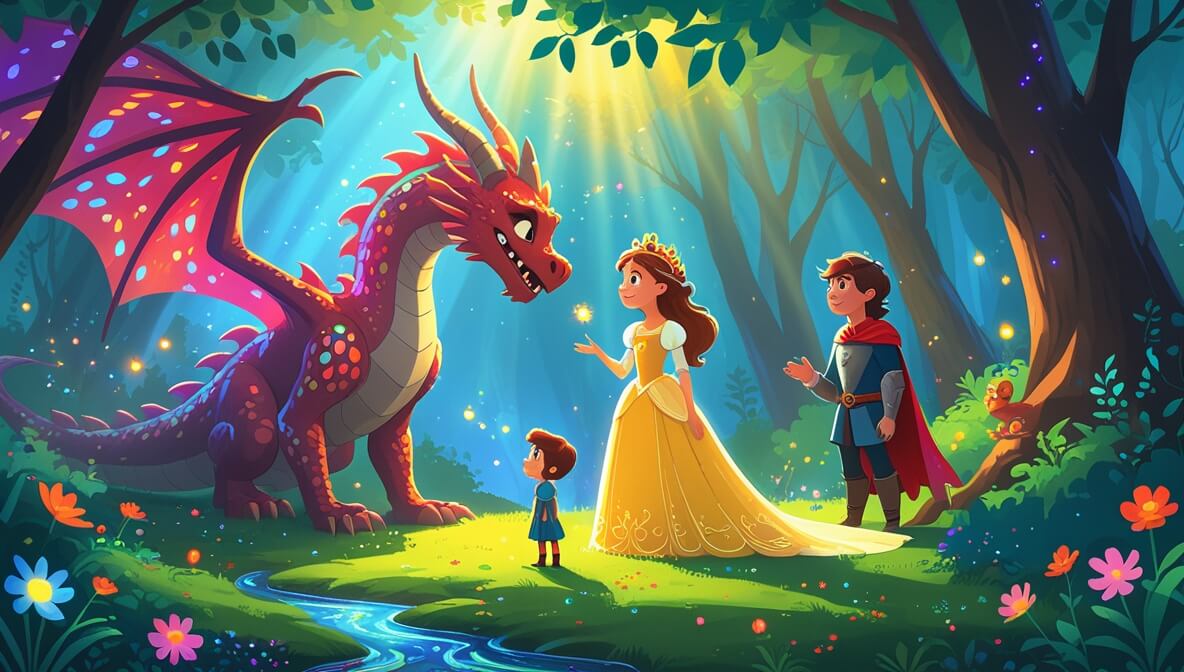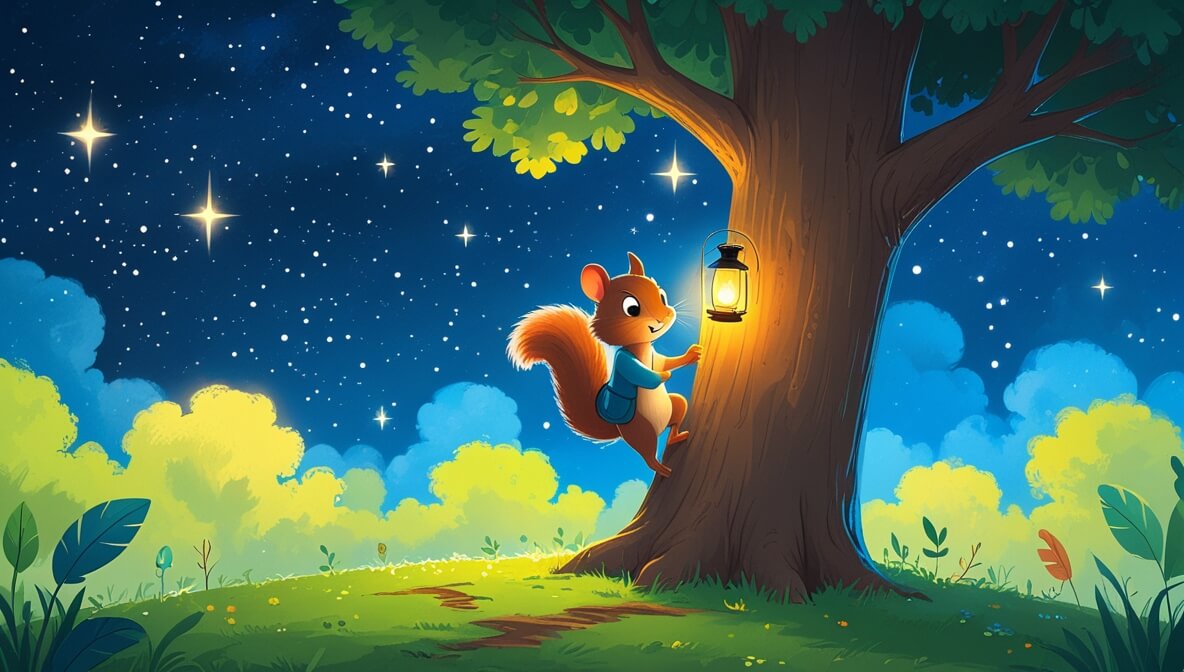A gentle moonbeam guides a curious bunny named Fluff and his friend, a wise owl named Hoot, on a magical journey through a sleepy forest.
Age Recommendation
0 – 4 years
Characters
Characters:
- Fluff (a curious little bunny who loves exploring)
- Hoot (a wise owl who knows the forest well)
Story
Once upon a time, in the heart of a sleepy forest, there lived a little bunny named Fluff. Fluff’s fur was soft and white like a fluffy cloud. One night, as the moon cast its gentle glow, Fluff was feeling especially curious.
The Moonlit Path
“I wonder what secrets the forest holds at night,” Fluff said to his friend, Hoot, the wise owl. “Let’s follow the moonbeam and see where it leads!” Hoot nodded wisely and flapped his wings. “Let’s go, Fluff!” he hooted. Together, they hopped and flew along the moonlit path, their eyes wide with wonder.
A Magical Discovery
As they wandered deeper into the forest, they heard a gentle rustling in the leaves. Fluff’s heart raced with excitement. “What could it be?” he whispered. Hoot listened carefully. “It’s the sound of the wind, singing a lullaby to the trees,” Hoot explained. “Listen closely, and you can hear their song.” They paused for a moment, letting the magical sound fill their hearts.
Home Sweet Home
After their adventure, Fluff and Hoot decided it was time to head back home. “Thank you for guiding me, Hoot,” Fluff said, feeling sleepy but happy. “The forest is full of wonders!” Hoot smiled and nodded. “Always remember, Fluff, the moon will guide you, and I’ll be here to help.” With that, Fluff snuggled into his cozy burrow, and Hoot perched nearby, keeping watch.
The end.
Moral of the Story
Curiosity leads to new discoveries, and having a wise friend by your side makes every adventure magical and safe.
Questions to Think About
- What might you discover if you explore your surroundings?
- How can you be a good friend like Hoot?
- What sounds do you hear at night where you live?
- Why is it important to have someone guide you when you explore?
- What other adventures could Fluff and Hoot have?
Do You Know
- Owls can see very well in the dark, which helps them hunt for food at night.
- Bunnies have big ears that help them hear sounds from far away.
Word Explorer
- Curious: Wanting to learn more about something.
- Moonbeam: A ray of light from the moon.
- Lullaby: A gentle song sung to help someone sleep.
Emotions in the Story
- Curiosity: Fluff felt curious when he wanted to explore the forest.
- Excitement: Fluff felt excited when he heard the rustling leaves.
- Safety: Fluff felt safe knowing Hoot was guiding him.
Color Your Scene
Imagine the moonlit forest with Fluff and Hoot. The moon is shining bright, casting a silver glow on the trees. Can you draw Fluff, with his soft, white fur, and Hoot, with his wide, wise eyes? Maybe add some twinkling stars and a gentle breeze rustling the leaves.
Parents’ Corner
This story can help parents talk to their children about:
Curiosity: Encourage your child to ask questions and explore the world around them safely.
Friendship: Discuss the importance of having friends who guide and support us.
Appreciation of Nature: Foster a love for the natural world by exploring together and listening to the sounds of nature.
Safety: Emphasize the importance of exploring with a trusted guide, just like Fluff had Hoot.

